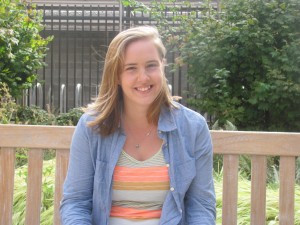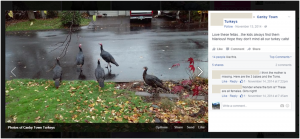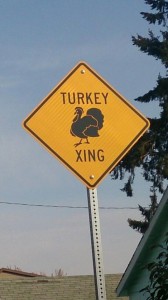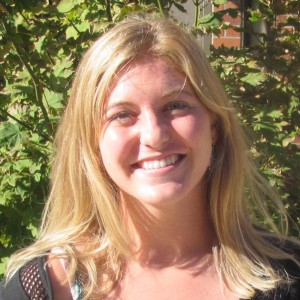By Sara Mercier
Lakeview, Oregon. Have you heard of it? That’s okay, you will soon.
This welcome sign tells the story of the town: the home of cowboys and ranchers. But what it doesn’t tell is the innovation and ingenuity and surprisingly forward thinking nature of parts of the community. 
Lake County is a hub of renewable energy, thanks to a little nonprofit Lake County Resources Initiative. That’s right. The remote county of around 8,000 people and almost 40,000 cattle, Lake County.
So we decided to start telling our story around the state, and trying to generate some new leaders in renewable energy. The first workshop we completed was in Talent, Oregon. It was wildly successful; here’s how we did it:
- Get the right partners and the right communities:
We’re an office of 2 people so our true power comes through our collaboration and partnerships around the county and state. We created a core group of leaders for this workshop series, and with each workshop we would bring in new relevant partners to meet that community’s specific needs. As far as what communities we would go to, we created an application process so that communities could apply for us to come present to them. This ensured that the communities were really ready and that the right players are dedicated to this process. Most importantly: we were able to identify who the movers and shakers were as far as community leaders that would help us make this happen!
- Immerse yourself into the needs of that community:
Renewable energy, like any planning, needs to be a community based process; it can’t be something that an outside group comes in and dictates what should happen. So with each workshop we worked with the community ahead of time to ensure we provided them with the right resources at the workshop that were curated towards the resources they had available in their area. This was a long in-depth process of collecting the right people from other organizations around the state to meet the needs of the community.
- It’s go time!
The day starts off with coffee and people milling around Lake County Resource Initiative’s ‘Renewable Energy Demonstration Trailer’. You want to teach people about technology? Hand-on work isn’t just for kids; you better have some hands-on things to show everyone to help them understand it and begin interacting with the idea of renewable energy technology.
After that the day kicks off with some movers and shakers:
Town Mayor: It is SO important to have a strong community leader backing the project, and this is just what she did. I was blown away by her conviction to make Talent more green.
Jim Walls, Lake County Resources Initiative: He told the successes and failures of Lake County on our endeavors to become 100% renewable. His speech gave something for the audience to tangibly latch onto and be inspired by.
Next, we have lined up a string of other experts to talk about the current energy use in Talent as well as their energy potential and how these initiatives can be financed
At lunch we break up into topic focus groups. This room was bursting with creating problem solving energy. Fast forward an hour and the group gathers back together. The collaboration in this room was unparalleled to anything I could have imagined. Organically, as the group gathers back together they end up in a giant circle so everyone is included. Each group begins reporting out on their discussions and some action items they had each identified.
To wrap up the end of the day that fabulous town Mayor stands up to give some thoughts on “moving forward” and let me just say, she stole the day right there. She had a wonderful list of tangible action items to move forward on. And to take the end of the day back to the inspirations from Lakeview she looks around the room and says “If the cowboys and ranchers can do it, we can do it. I learned today who I need to be open-minded about being open-minded” the room erupted in laughter. She then turns to Jim and myself and says “cowboy, you’re my hero.”
- Be sure to leave them with a little something:
Leave them with more as they’re walking out the door:
We conducted survey so that we can identify a snapshot in time of the beginning impact of the workshop and how we could possible improve it in the future. In return: overwhelm them with a bunch of REALLY AWESOME renewable energy resources. Like case studies from areas like the new home yours truly, Lake County; a renewable energy workbook, community energy planning tool, guide to community energy strategic planning; basically, a gold mine of clean energy plan resources.
- Don’t just leave them hanging!
That workshop is just the beginning. As a facilitator in this process, if I were to walk away, I would be doing a disservice to the community I had pledged to assist. This process is more than dumping some information in the laps of a community and walk away!
Keep checking in! Don’t you want to know if your event was successful so in the future you can either adjust for problems or replicate it to a T because it was so fantastically successful?
- Keep track of the successes:
We’ve made sure to keep track of everything happening in each of the towns we have visited. Talent has made amazing strides since their workshop. So here’s what happened in Talent: The Mayor held up her promises, there is now a working clean energy group approved by the town council and they are moving forward with putting a solar array on their new community center, just to name a few They are the new movers and shakers, the new example and inspiration other towns can look to, all because of one tiny nonprofit in the remote town of Lakeview that slowly, more people are starting to hear about.
So what do you think? Don’t you want to be part of this amazing process?
Sara received her bachelor’s degree in Engineering Science with a minor in Landscape Studies from Smith College. While in college, Sara worked with the Northampton Office of Planning and Sustainability and the Northampton Department of Public Works to develop and present multiple conceptual designs for a multi-use trail spur. Sara hopes that RARE AmeriCorps – Resource Assistance for Rural Environments will help her develop both personally and professionally by allowing her to be out in nature, getting her hands dirty and exploring a new part of the country. After the RARE program, Sara wants to be a planner, aiding in the development of a self-sustaining city with an integrated approach to energy and food systems.





